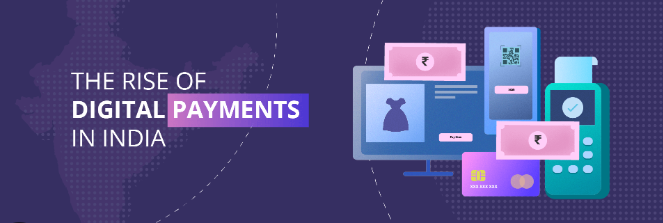AUTHOR : BILLIE EILLISH
DATE : 31/08/24
Introduction
In recent years, India has witnessed a profound transformation in its financial landscape[1], largely due to the proliferation of digital payment providers. This shift towards a more digital economy[2] has been accelerated by various factors, including technological advancements, government initiatives, and the increasing internet penetration across the country. In this article, we’ll explore the rise of digital payment[3] providers in India, their impact on the economy, and answer some frequently asked questions about this evolving sector.
The Rise of Digital Payment Providers

A Technological Revolution
Digital payment systems in India have seen a significant rise, driven by technological innovations[4] such as smartphones, high-speed internet, and secure payment gateways. The introduction of Unified Payments Interface (UPI) by the National Payments Corporation of India (NPCI) has been a game-changer, providing a seamless and instant payment solution for millions of Indians. UPI’s integration with various banking and financial services[5] has simplified transactions, making digital payments more accessible to the masses.
Government Initiatives
The Indian government’s push towards a cashless economy has been instrumental in the growth of India’s digital payment provider. Initiatives such as Digital India, Jan Dhan Yojana, and the promotion of Aadhaar-linked payments have laid the foundation for a robust digital payment infrastructure. These initiatives aim to increase financial inclusion, enhance transparency, and reduce corruption by moving towards a more digital financial ecosystem.
The Role of Fintech Companies
The rise of fintech companies has also contributed significantly to the digital payment revolution. Startups and established players alike have introduced innovative payment solutions, including mobile wallets, digital banking services, and contactless payment options. Companies like Paytm, PhonePe, and Google Pay have revolutionized the way Indians conduct financial transactions[1], making it easier and more convenient for users to manage their finances on the go.
Impact on the Indian Economy
Financial Inclusion
One of the most significant impacts of digital payment providers is the increase in financial inclusion[2]. India’s digital payment providers have enabled individuals in remote and rural areas to access banking services that were previously out of reach. By providing a platform for transactions without the need for physical bank branches, digital payment systems have empowered millions to participate in the formal economy, thus bridging the financial inclusion gap.
Economic Growth and Efficiency
The adoption of digital payments has contributed to economic growth by increasing transaction efficiency and reducing costs associated with handling cash. Businesses can now process payments more quickly and securely, leading to improved cash flow and reduced operational costs. Additionally, digital transactions[3] are more transparent, which helps in better tracking of economic activities and enhances tax compliance.
Reduced Corruption and Black Money
Digital payments play a crucial role in curbing corruption and reducing the prevalence of black money. By creating a digital trail of transactions, these systems make it more difficult for illicit activities to go unnoticed. The increased transparency helps in monitoring financial flows and discouraging tax evasion, thus contributing to a more accountable and fair financial system.
Challenges and Solutions

Digital Literacy and Access
Despite the advancements, there are challenges that need addressing. Digital literacy remains a significant barrier, especially in rural areas where people may lack the necessary skills to use digital payment systems effectively. To tackle this, government and private organizations need to invest in educational programs and training sessions to enhance digital literacy[4].
Cybersecurity Concerns
As digital payments grow, so do concerns about cybersecurity. Protecting user data and preventing fraud are critical to maintaining trust in digital payment systems. Payment providers must implement robust security measures, including encryption, multi-factor authentication, and continuous monitoring to safeguard against cyber threats.
Infrastructure Development
Infrastructural challenges, such as intermittent internet connectivity and inadequate power supply, can hinder the effectiveness of digital payments in certain regions. Addressing these issues requires a collaborative effort between government bodies and private entities to improve infrastructure and ensure a more reliable digital payment experience for all users.
Conclusion
The rise of India’s digital payment provider has transformed the financial landscape, offering numerous benefits to individuals and businesses alike. With ongoing advancements in technology, supportive government initiatives, and the increasing adoption of digital payment solutions[5], India is well on its way to becoming a more financially inclusive and transparent economy. However, addressing challenges such as digital literacy and cybersecurity will be crucial in ensuring the continued success and growth of this dynamic sector.
(FAQ)
1. What are digital payment providers?
India Digital Payment Provider companies or platforms that facilitate electronic transactions between buyers and sellers. These include mobile wallets, online payment gateways, and digital banking services that allow users to perform financial transactions over the internet or through mobile apps.
2. How do digital payments work?
Digital payments work by transferring funds electronically from one account to another. Users typically need to link their bank accounts, credit/debit cards, or digital wallets to the payment provider’s platform. Transactions can be initiated via apps or websites, and funds are transferred instantly or within a few hours, depending on the payment method used.
3. What is UPI, and how does it benefit users?
Unified Payments Interface (UPI) is a digital payment system developed by the National Payments Corporation of India (NPCI) that allows users to link multiple bank accounts to a single mobile application. UPI enables instant, secure, and low-cost transactions, making it easy for users to transfer money, pay bills, and make purchases directly from their smartphones.
4. Are digital payments safe?
Digital payments are generally safe when proper security measures are in place. Payment providers use encryption, fraud detection systems, and multi-factor authentication to protect user data. However, users should also practice caution by using strong passwords, avoiding suspicious links, and regularly monitoring their account activity.
5. How can I start using digital payments?
To start using digital payments, you need to choose a digital payment provider or app that suits your needs. Download the app, complete the registration process, and link your bank account or card. Follow the app’s instructions to make transactions and manage your financial activities.

